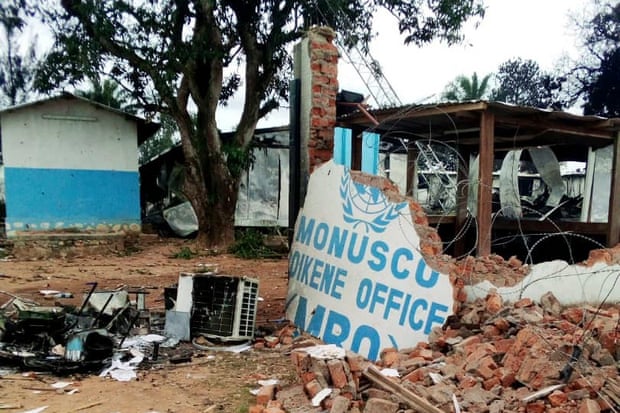World Health Organization rues spike in violence that impeded efforts of health workers when outbreak was almost under control.

The men who came to the village of Ntombi in the Democratic Republic of the Congo in mid-December aimed to spare no one.
Militants with the Allied Democratic Forces (ADF), one of dozens of armed groups operating in DRC’s North Kivu, they hacked to death women and children, killing 22 people in a single incident in one of a series of attacks over the course of a weekend that left 43 dead in total.
The consequence of the attack, one of several in a spike of violence in DRC, are profound: occurring at a moment when health officials believed they were close to finally bringing the country’s 16-month long Ebola virus outbreak under control.
“We were down to the last two transmission chains,” explained Mike Ryan, executive director of the World Health Organization’s (WHO) health emergencies programme. “We were so close to finishing,” he said, exasperated.
“I was going through the figures last night. If you look at the number of health zones in the area that were affected, they had dropped dramatically.”
Now the health teams, both local and international, that have been battling an epidemic that has claimed more than 2,200 lives over the past year and a half, are faced with a grimly familiar picture: a security crisis that limits their ability to work in one of the three epicentres of the outbreak, and an inevitable resurgence of the disease.
And underlining the continuing Ebola threat, the recent security issues coincide with a particularly intense “super chain” of transmission, involving an individual who had suffered a recurrence of the disease six months after apparently recovering.
The massacre at Ntombi followed hard on the heels of a pair of lethal attackson health workers at the end of November, variously blamed on the ADF and the Mai Mai armed militia, in Mangina and in the sensitive Biakato Mines region. The attacks forced the evacuation of many staff involved in the Ebola effort.
The chain of circumstances at least partly responsible for the spike in unrest is also familiar. Faced with a new operation by DRC government forces, targeting the ADF around Beni, the group replied with attacks targeting civilians.
Weekend briefing
The motives behind other attacks, however, including the attack on the health team at the Biakato Mines, remain murky.
All of which led the head of WHO, Tedros Adhanom Ghebreyesus, to call for greater security protection for Ebola responders in the Guardian earlier this month.
“There are two dynamics that are impacting on the security situation as it affects the Ebola response,” said Ryan, differentiating between attacks by the Mai Mai, a group seen as embedded within the local community and with links to local politicians, and the ADF, a militant Islamist rebel group founded by a Catholic convert.
“There is the situation around Beni, which is an area where the ADF are operating. And that is something completely outside of the Ebola virus response.

“Because the ADF is being pressured by government forces it kills people, and then the local population responds with hostility to [the local UN peacekeeping mission] Monusco, and that in turn creates huge gaps in security for an Ebola response effort that’s locked in its hotel with active rioting going on.”
The setbacks emerged at a moment when health officials believed they were making significant progress, not only with their policy of improved engagement with a highly suspicious local community, whose resistance to the response was blamed for difficulties in managing the outbreak, but in building up the capacity of the local health system, which was practically non-existent in some areas at the beginning of the outbreak.
“You can see from the figures there are health zones where we’ve gone 100 days, 181 days without a case, where the disease has been cleared,” said Ryan. “But every time we get close [to completely controlling the outbreak], security issues come and knock us down again.”